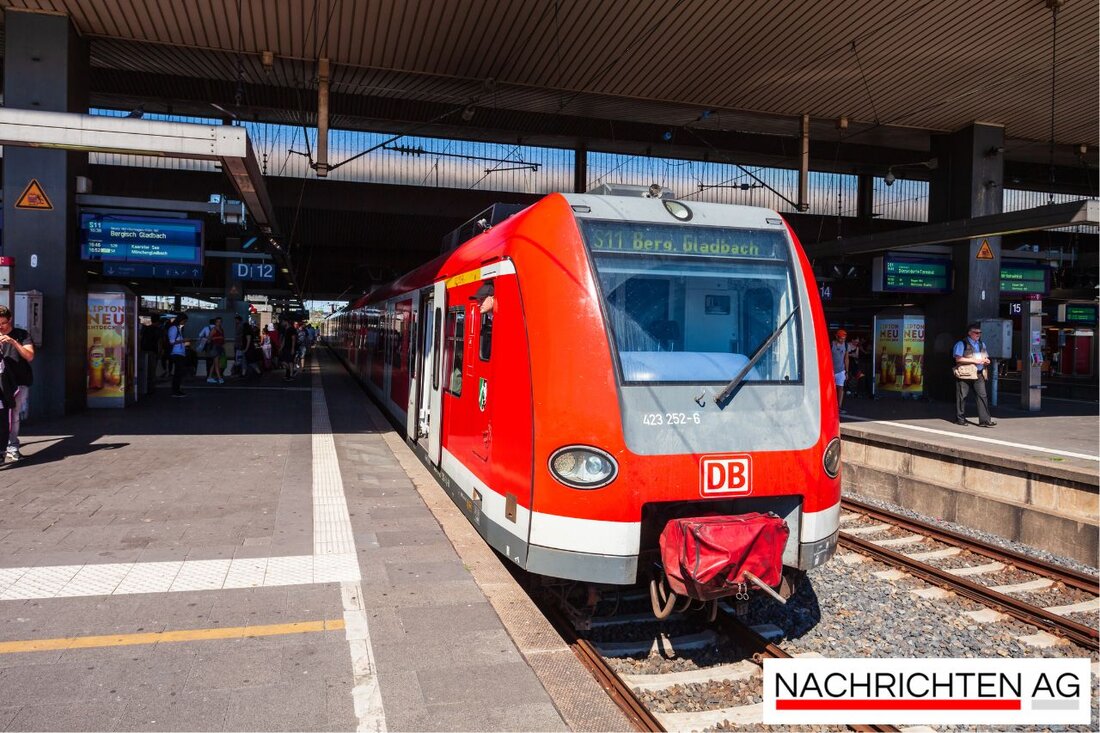S-Bahn chaos in Berlin: commuters fight with failures and delays!
Berlin S-Bahn is fighting with technical problems: Delays and failures affected in rush hour traffic. Solution planned by 2027.

S-Bahn chaos in Berlin: commuters fight with failures and delays!
Passengers in Berlin S-Bahn traffic are currently facing considerable short-term impairments on the east-west connection, known as the light rail. Technical problems lead to numerous failures and delays, especially during rush hour. The disorders are mainly due to malfunctions in the track free registration system, which plays an essential role in signal box technology.
The track freight registration is a system that monitors where the trains are on the route, and ensures that only one train leads between two signals. Two sections between Bellevue and Tiergarten as well as three positions between Hackescher Markt and Friedrichstrasse are currently affected. Although these areas are only a few hundred meters long, they are indispensable for the smooth operation of the S-Bahn. Deutsche Bahn has set up a special group of experts to determine the causes of the problems and find solutions.
Technical challenges and infrastructure
The difficulties in the track freightening are not easy to identify and fix, since the errors usually only occur for a short time. According to experts, high temperatures and temperature fluctuations could increase the problems in signal box technology. In addition, there have also been disruptions in a switch in Charlottenburg in the past few days, but they are not related to the track free registration problems.
Deutsche Bahn is struggling nationwide with an outdated infrastructure; many of the signal boxes are over 100 years old and are operated manually. However, a conversion of the signal box technology on the light rail system is already planned, which should be completed by 2027. This conversion has been underway since the 1990s and includes signal boxes designed to last for at least 40 years. The first generations of signal boxes are already being replaced by new technologies that are scheduled to be put into operation in the mid-2030s.
Investments in the S-Bahn
The challenges of the S-Bahn fall within a larger framework of investments in the transport infrastructure in Germany. A recently adopted cabinet decision approved by 2029 investments of around 166 billion euros for the renovation and expansion of rails, streets and waterways. The largest share of approximately 107 billion euros is intended for the renovation of the rail, such as Future Network.oepnv.de reported.
Planned measures include the renovation of ailing railway lines, the modernization of the rail infrastructure and the digitization of the signal boxes. The new train protection system ETCS (European Train Control System) should also enable shorter tie consequences and increase the performance of the network. Federal Transport Minister Patrick Schnieder emphasized the termination of the renovation background in the transport infrastructure and announced that new construction projects in the road and rail area should also be taken into account.
New S-Bahn car for Berlin
In the meantime, Deutsche Bahn has also made progress in the renewal of its fleet. A new transport contract, which was signed by representatives of the railway and politics, comprises traffic services of 9.7 million train kilometers annually for the part of the Ring/Südost. This contract includes the order of 382 new S-Bahn cars, which run on the S47 between Südkreuz and Spindlersfeld from January 2021.
By 2023, the integration of these new cars will continue to operate into regular operation. 85 four-car units and 21 two-car units are replaced on the lines S46, S8 and the ring railway lines S41/S42. These new vehicles are produced by a consortium of the Siemens and Stadler companies and production takes place in the Berlin-Brandenburg region and in Hungary, where Stadler operates a work to manufacture the car boxes. The entire order has an investment volume of around 900 million euros, such as sbahn.berlin reported.
Through these measures, both in terms of technical improvements and the renewal of the fleet, Deutsche Bahn will try to increase the reliability and efficiency of the S-Bahn network in Berlin in the long term.

 Suche
Suche
